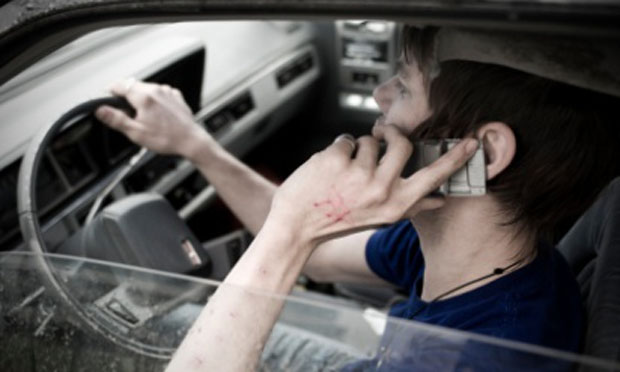In the last decade the number of U.S. cell phone subscribers has nearly quadrupled, and their use while driving is common. The National Highway Traffic Safety Administration determined that at any time during the day, 11% of drivers were likely to be using cell phones. And the consequences are not trivial: In 2011, texting and cell phone usage contributed to 3,300 traffic deaths, according to the U.S. Department of Transportation.
To assess the risks of using a cell phone while driving, a 2004 American Enterprise Institute-Brookings Institution Joint Center study, “A Comparison of the Cell Phone Driver and the Drunk Driver,” is a useful starting point. Rather than attempting to gather and untangle real-world accident data, the authors used a high-fidelity driving simulator to test the comparative effect of cell-phone use and alcohol consumption on drivers’ performance. The study’s authors determined that:
- Drivers conversing on cell phones had slower braking reactions and were involved in more traffic accidents than when they were not conversing on the cell phone.
- Subjects who were legally intoxicated drove more aggressively, following closer to the vehicle immediately in front of them and braking with more force.
- When controlling for driving conditions and other factors, cell-phone drivers exhibited greater impairment than intoxicated drivers.
- Hands-free cell-phone systems had no benefit compared to hand-held phones.
- Cell phone conversations have a more profound effect on driver performance than other forms of in-car distraction, including talking to passengers.
In concluding, the authors write: “There are clear societal norms associated with intoxicated driving and laws in the United States expressly prohibit driving with a blood alcohol level at or above .08%.” Given that drivers using cell phones show a similar or greater impairment, “logical consistency” suggests that effective, science-based regulation is appropriate.
Related research: A 2008 study, “Passenger and Cell Phone Conversations in Simulated Driving,” examined how talking with car passengers while driving differed from using a cell phone. “The results show that the number of driving errors was highest in the cell phone condition,” the researchers found. “In passenger conversations more references were made to traffic, and the production rate of the driver and the complexity of speech of both interlocutors dropped in response to an increase in the demand of the traffic … mitigating the potential negative effects of a conversation on driving.”
Keywords: technology, safety, cars, mobile tech, distracted driving, telecommunications


Expert Commentary